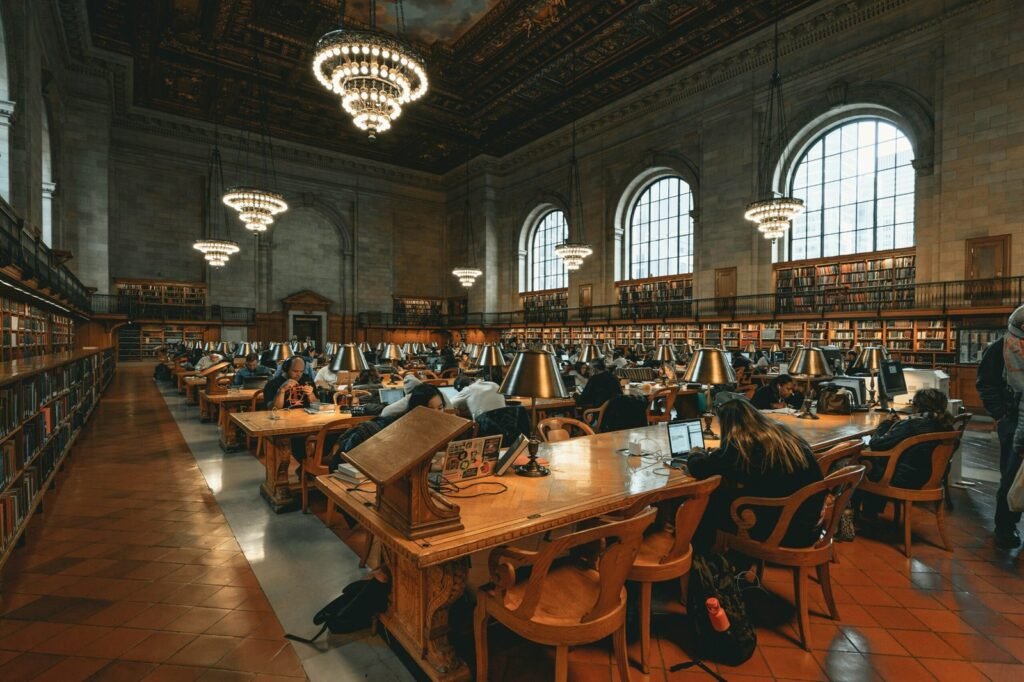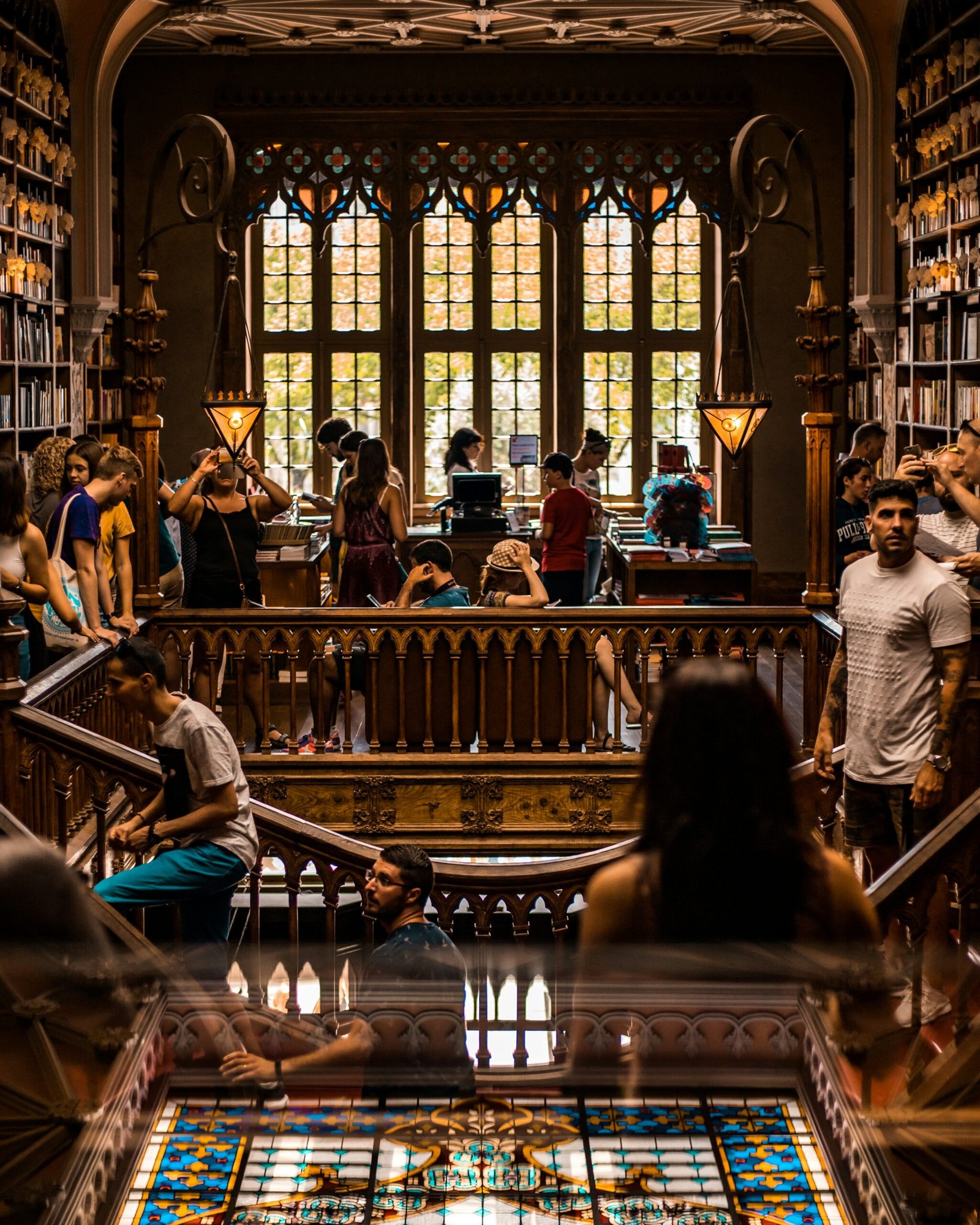An Overview of the New York Public Library
The New York Public Library (NYPL) is a monumental institution in the realm of public knowledge and cultural heritage. Established in 1895, the NYPL has grown to become the third-largest library in North America, boasting an astounding collection of over 50 million items. This impressive repository includes books, periodicals, manuscripts, photographs, maps, and an array of multimedia resources, catering to a vast spectrum of interests and academic pursuits.
NYPL’s mission is deeply rooted in the principles of accessibility, inclusivity, and lifelong learning. By providing free and open access to information, it strives to empower individuals, foster intellectual growth, and build a knowledgeable community. This is achieved through its extensive network of 87 branches spread across Manhattan, the Bronx, and Staten Island. These branches serve a diverse population of approximately 3.5 million people, underscoring the library’s role as a vital community hub.

A variety of resources and services are available at these branches, tailored to meet the varied needs of their patrons. From comprehensive reference collections and digital archives to innovative programming and educational workshops, the NYPL is committed to nurturing curiosity and supporting the academic and personal development of its users. Special collections, such as rare books, historical documents, and unique cultural artifacts, further augment the library’s offerings, attracting researchers and history enthusiasts from around the globe.
In addition to its physical branches, the NYPL has made significant strides in the digital landscape. Its online presence includes a robust digital library, providing access to e-books, scholarly articles, and interactive resources, thereby extending its reach beyond traditional boundaries. Through continuous modernization and community engagement, the New York Public Library remains a cornerstone of educational and cultural enrichment for millions of individuals.
The Architectural Splendor of the Rose Main Reading Room
The Rose Main Reading Room, a centerpiece of the New York Public Library, is renowned for its architectural grandeur. This majestic room, with its 52-foot-high walls, captures the essence of neoclassical design, adorned with grand arched windows that allow natural light to flood the space. These expansive windows not only illuminate the room but also offer a visual connection to the bustling city outside, creating an ambiance that is both serene and inspiring.
The intricate design of the room extends to its ceiling, which is lavishly gilded and painted with elaborate motifs. This ceiling, a marvel in its own right, channels the opulence of a Renaissance hall, captivating visitors with its detailed artwork. The chandeliers hanging from above add a touch of elegance, casting a warm glow that enhances the room’s inviting atmosphere. These chandeliers, with their intricate designs, are not merely lighting fixtures but artworks that contribute to the room’s overall aesthetic.
The Rose Main Reading Room is more than just an architectural marvel; it is a sanctuary for readers, researchers, and visitors alike. The space, designed with meticulous attention to detail, embodies the library’s mission to foster an environment where learning and curiosity can thrive. The room’s spacious layout, with its rows of wooden tables and comfortable chairs, provides an ideal setting for the pursuit of knowledge and intellectual exploration. The presence of this grandiose room within the New York Public Library underscores the institution’s commitment to offering an inspiring and conducive environment for intellectual engagement.
This iconic space within the New York Public Library stands as a testament to the enduring legacy of its architectural visionaries. The Rose Main Reading Room continues to attract visitors from around the world, who are drawn not only to its rich resources but also to its magnificent design that celebrates both beauty and intellect.
Treasures Within: Notable Collections and Their Significance
The New York Public Library (NYPL) is home to an extraordinary array of notable collections that hold immense cultural and historical significance. Among its most prized acquisitions is America’s first Gutenberg Bible, one of the few surviving copies of the Latin Vulgate printed by Johannes Gutenberg in the 1450s. This invaluable artifact not only represents a cornerstone in the history of printing but also underscores the NYPL’s commitment to preserving landmark achievements in human knowledge and culture.
Additionally, the NYPL boasts an extensive collection of Americana literature and printed materials, a testament to the library’s dedication to documenting the rich history of the United States. This collection encompasses an array of rare books, manuscripts, and ephemera, offering scholars, historians, and the general public a deep insight into the nation’s past. Key highlights include original drafts of the Declaration of Independence, first editions of iconic American novels, and personal papers of historically significant figures, providing a tangible connection to the foundational moments and cultural milestones of the country.
Moreover, the library’s holdings extend beyond American heritage, featuring special collections that cover a diverse range of global narratives and disciplines. Renowned collections like the Schomburg Center for Research in Black Culture present an extensive archive of materials related to African American and African diaspora experiences, playing a crucial role in preserving and promoting the stories and contributions of these communities. Similarly, the Jewish Division houses one of the world’s leading Judaica collections, reflecting the profound impact of Jewish life and culture through history.
The significance of these collections lies not only in their rarity and value but also in their ability to educate, inspire, and connect people with the past. Through careful preservation and accessible curation, the New York Public Library fulfills its role as a custodian of knowledge and history, ensuring that these treasures continue to inform and enrich future generations.
NYPL in Popular Culture: A Cinematic Icon
The New York Public Library (NYPL) has long been more than a repository of books and a nexus for scholars; it has become a cinematic icon, immortalized in a variety of films and television shows. The library’s grand architecture and historical significance have made it an ideal backdrop for scenes requiring an impressive and cultured setting. This distinction has helped the NYPL reach a broader audience, cementing its role not only in academia but also in popular culture.
One of the most memorable appearances of the NYPL is in the original ‘Ghostbusters’ movie, where the library’s majestic reading rooms and intricate facades play a crucial role in setting the tone for the paranormal adventure. The dramatic unveiling of the ghost in the library’s grand hall remains one of the most iconic scenes in film history. Additionally, ‘The Day After Tomorrow’ features the library in its narrative, showcasing it as a sanctuary amidst a weather cataclysm, thus emphasizing its role as both a literal and figurative refuge.
These cinematic portrayals have not only enhanced the NYPL’s public image but also introduced it to audiences who might never have experienced its grandeur firsthand. By serving as a prominent location in major films, the library has transcended its primary mission of serving readers and researchers, becoming a symbol of culture and heritage accessible to anyone who views these works. Even in brief appearances, the NYPL’s stunning interiors and exteriors often leave lasting impressions, further establishing its status in the public consciousness.
In effect, the New York Public Library’s recurring roles in film highlight its architectural splendor and cultural gravitas. This visibility bolsters its legacy as a cherished institution, one that stands as a testament to the power of knowledge and the enduring appeal of magnificent design. The library thus continues to inspire filmmakers and audiences alike, making it a notable landmark not just in reality but in the collective imagination.













